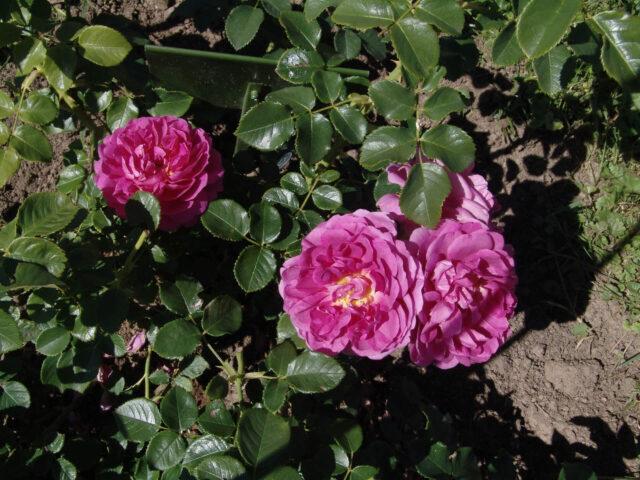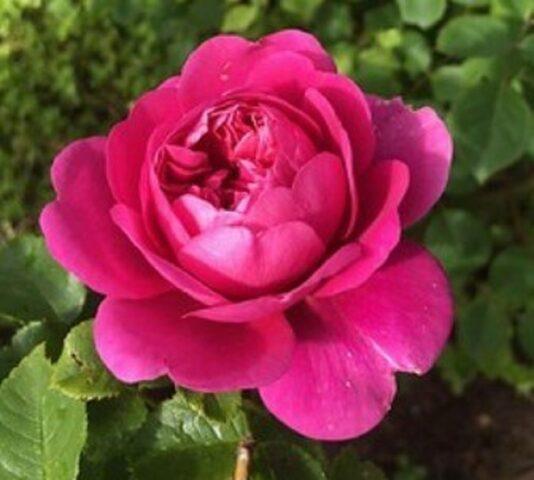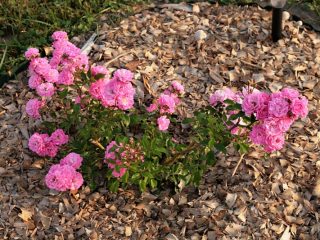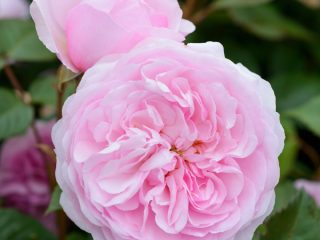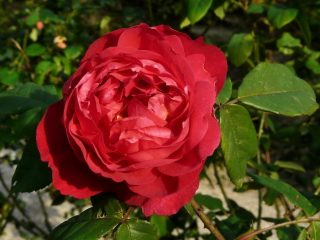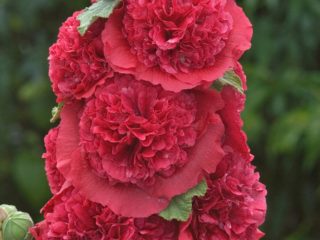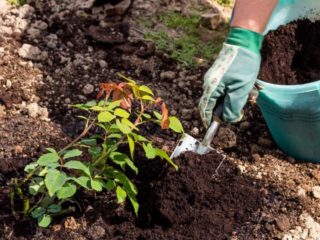Content
Relatively young, but already conquering the hearts of gardeners, the Princess Anne rose has absorbed all the best from English varieties. Its buds are graceful and painted a pleasant pink, almost raspberry color. But to enjoy all the beauty and aroma of flowering bushes, you should take proper care of them.
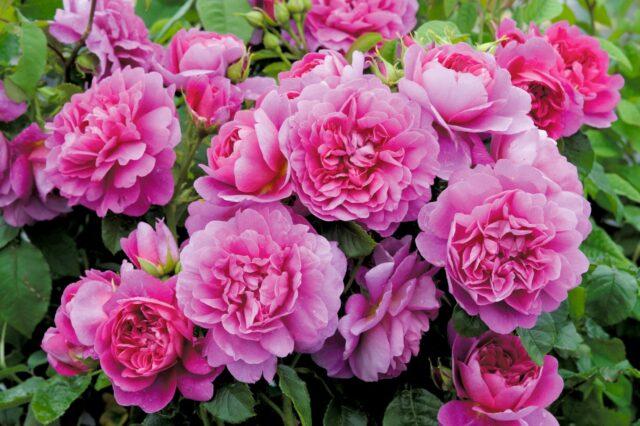
The Princess Anna rose variety is universal; it is used both in landscape design and in floristry.
History of selection
The Princess Anne rose variety was bred by the famous English rose grower and breeder David Austin in 2010. Its name was given in honor of Princess Anne, the daughter of Queen Elizabeth II of England.
A year after its creation, in 2011, the Princess Anne rose won its first award at an international exhibition in Great Britain, it was named “Best New Plant Variety.” A year later, the prickly beauty was awarded the title “Gold Standard”.
Description and characteristics of the rose Princess Anne
The Austin rose variety Princess Anne belongs to the scrub class. Reminiscent of a hybrid of a classic version of English antique flowers. The bush is compact, erect, fairly branched.Its height can reach up to 120 cm and width - 90 cm. The shoots are strong, straight, and even under the weight of large buds they practically do not bend. There are many thorns, a moderate amount of green mass. The leaves are medium in size, leathery, with a glossy surface and finely serrated edges.
The buds form evenly throughout the bush. They are collected in large brushes of 3-5 pieces, but single flowers can also be observed. They are densely double and quite large, the diameter of which varies between 8-12 cm. At first the buds are cone-shaped, at the peak of flowering they are goblet-shaped. Only when they bloom, they have a dark pink tint, almost red (raspberry). With age, the flowers lose their rich color, becoming pink with a purple tint. The petals themselves are narrow, numerous (up to 85 pieces), and densely packed. On their reverse side you can see a yellowish tint.
Repeated flowering occurs in waves, from June to October, almost until the onset of the first frost. Throughout the growing season, the bush changes its color palette very advantageously, which gives this variety its charm. The flowers are weather-resistant and easily tolerate short rains. Under good growing conditions, they can remain on the bush without drying out or falling off for up to 5-7 days.
Advantages and disadvantages of the variety
Rose is a very beautiful garden plant. Proof of the magnificence of this flower is the Princess Anne rose variety, which can easily be classified as unpretentious and very hardy. But still, before buying a seedling, you should weigh all the positive and negative qualities of a garden plant so that complex problems do not arise during cultivation.
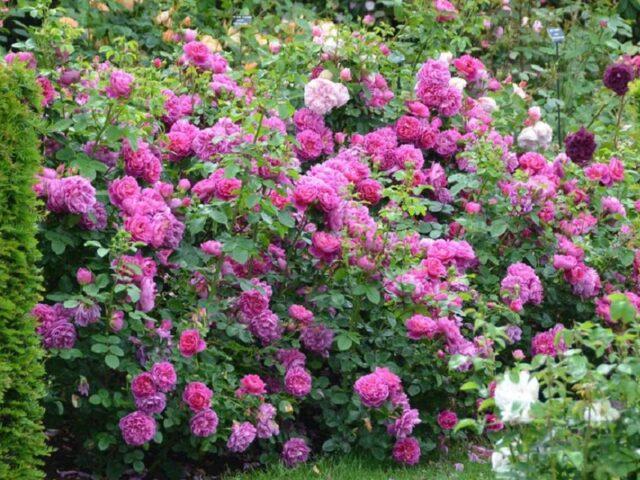
The compact and beautiful bush makes the Princess Anne rose ideal for growing as a hedge and also for decorating borders
Pros:
- the buds are large against the background of a compact bush;
- long and wavy flowering;
- pleasant and variable color of flowers;
- delicate medium perceptible aroma;
- unpretentiousness in cultivation;
- good immunity to diseases and pests;
- high resistance to frost (USDA climate zone – 5-8);
- average resistance to precipitation;
- versatility (can be used to decorate the landscape and for cutting);
- The buds stay on the bush for a long time and also stand for a long time when cut without shedding.
Minuses:
- in dry weather it fades quickly;
- does not grow well on sandy soils;
- flowers fade in the sun;
- difficult to reproduce.
Reproduction methods
Since the English park rose Princess Anne is a hybrid, it should be propagated only by vegetative methods. The most optimal and productive method that can be used at home is cuttings.
To prepare cuttings, choose a strong, semi-lignified shoot. Using pruning shears, cut the branch at an angle above the upper bud located on the outside of the crown. Cuttings are cut from the lower and middle parts of the branch, leaving one leaf on each segment. In this case, the lower cut is made oblique (45°), the upper one is left straight. The finished planting material is treated with a growth stimulator. Then the cuttings are planted in previously prepared soil. They are deepened by 2-3 cm, the soil around them is well compacted and watered.For better rooting, you should create a greenhouse effect for planting by covering the container with the planted cuttings with film. Under proper conditions, roots will appear in approximately 30 days.
Also at home, the Princess Anne rose can be propagated by dividing the bush. This method is used if the plant is being transplanted to a new location. It is carried out in early spring after the snow melts. First, the bush is thoroughly watered, then it is dug up. The roots are well cleaned from the earthen clod and, using a sharp knife or shovel, divided into parts. It is important that each separated part has 2-3 shoots and a well-developed rhizome. Damaged areas are removed. The shoots are shortened, leaving 3-4 buds. The place where the root is divided must be lubricated with mash (a mixture of clay and manure in equal quantities). Afterwards, the parts are immediately planted in a new permanent place.
Growing and care
The best time to plant Princess Anne roses is mid-spring. In the autumn, it is carried out only if the weather conditions are not very changeable and the plant can take root before winter.
The place for the Princess Anne rose should be chosen taking into account that the sun's rays hit the bush only in the morning and evening hours. At noon it would be in shadow. The site itself should not be low-lying or too exposed to through winds. And groundwater should pass at a depth of at least 1 m.
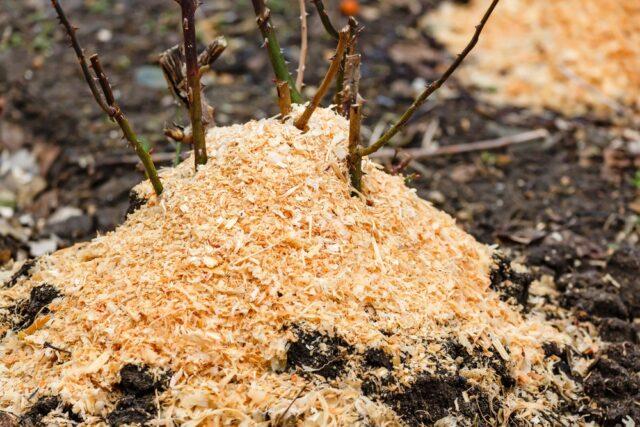
At the end of planting, the Princess Anne rose seedling is watered and the soil around is mulched with sawdust or peat.
The most suitable indicator of soil acidity varies between pH 6.0-6.5.Black soil is considered optimal for roses, but its cultivation on loamy soils is also acceptable, only in this case it will need to be periodically enriched with organic matter.
Princess Anna roses are planted immediately in a permanent place, since they do not tolerate transplantation well. To do this, dig a hole measuring 50x70 cm in advance. At the bottom, drainage is formed from gravel or crushed stone with a layer of at least 10 cm. Soil taken from the hole, mixed with compost in the form of a cone, is poured on top. Just before planting, the roots of the Princess Anne rose seedling are first placed in a clay mash, then it is transferred to a prepared hole and, having carefully spread the roots over an earthen cone, they begin to cover it with the remaining soil. This is done in such a way that the root collar after compaction is located 3 cm below the soil level.
The Princess Anna rose does not need constant watering; it only needs to moisten the soil once every 10-15 days. If the weather is dry, the frequency of irrigation can be increased. At the end of summer, watering is done less frequently, and in September it is completely stopped.
Every year, the Princess Anne rose requires feeding in order to gain strength for abundant flowering. As a rule, in the spring the bush requires nitrogen-containing fertilizers in order to increase green mass and young shoots. And during the flowering period, it is advisable to feed it with a potassium-phosphorus composition.
Pruning is also necessary for roses of this variety. It is performed at least twice a season. In the spring, all frozen shoots are removed, and healthy ones are pruned by 1/3. During the flowering period, dried buds are removed. In the fall, sanitary pruning is carried out, thinning the bush and removing damaged branches.
The Princess Anna rose variety needs shelter only if the winter is quite severe with frosts around -3 0 °C.Otherwise, there is no need to cover the bushes.
Pests and diseases
The Princess Anna rose has good immunity to diseases, and pests practically do not touch the bushes. But still, like all plants, it can be affected by gray and root rot. And if in the first case, at an early stage, the disease can be detected by the appearance of small spots on the leaf blades and a gray coating on the flowers, then root rot manifests itself very late, when the plant is completely depleted, loses strength, withers and subsequently dies.
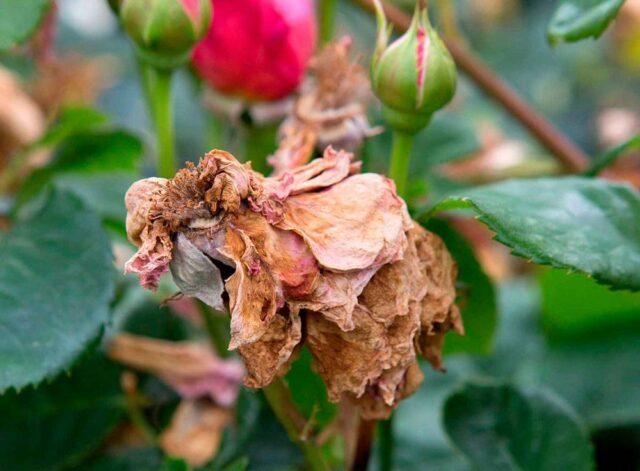
Gray and root rot appears when the rose is not properly cared for, in particular, due to improper watering or fertilizing.
Application in landscape design
Rose Princess Anna, judging by the photo, description and reviews of gardeners, is a very beautiful flower that can decorate any garden plot. It looks great in group plantings in combination with roses of other shades, as well as flowers such as phlox, hydrangea, geranium, peonies and bluebells. Designers often use it as a single crop, as a tapeworm, or to decorate borders.

Princess Anne is also suitable for creating hedges
Conclusion
Rose Princess Anne is a good variety for planting both in areas with limited space and in larger areas. Its uniqueness lies in the fact that with minimal labor costs you can get a lushly flowering bush that can easily become the center of the garden.
Reviews with photos about the rose Princess Anna
